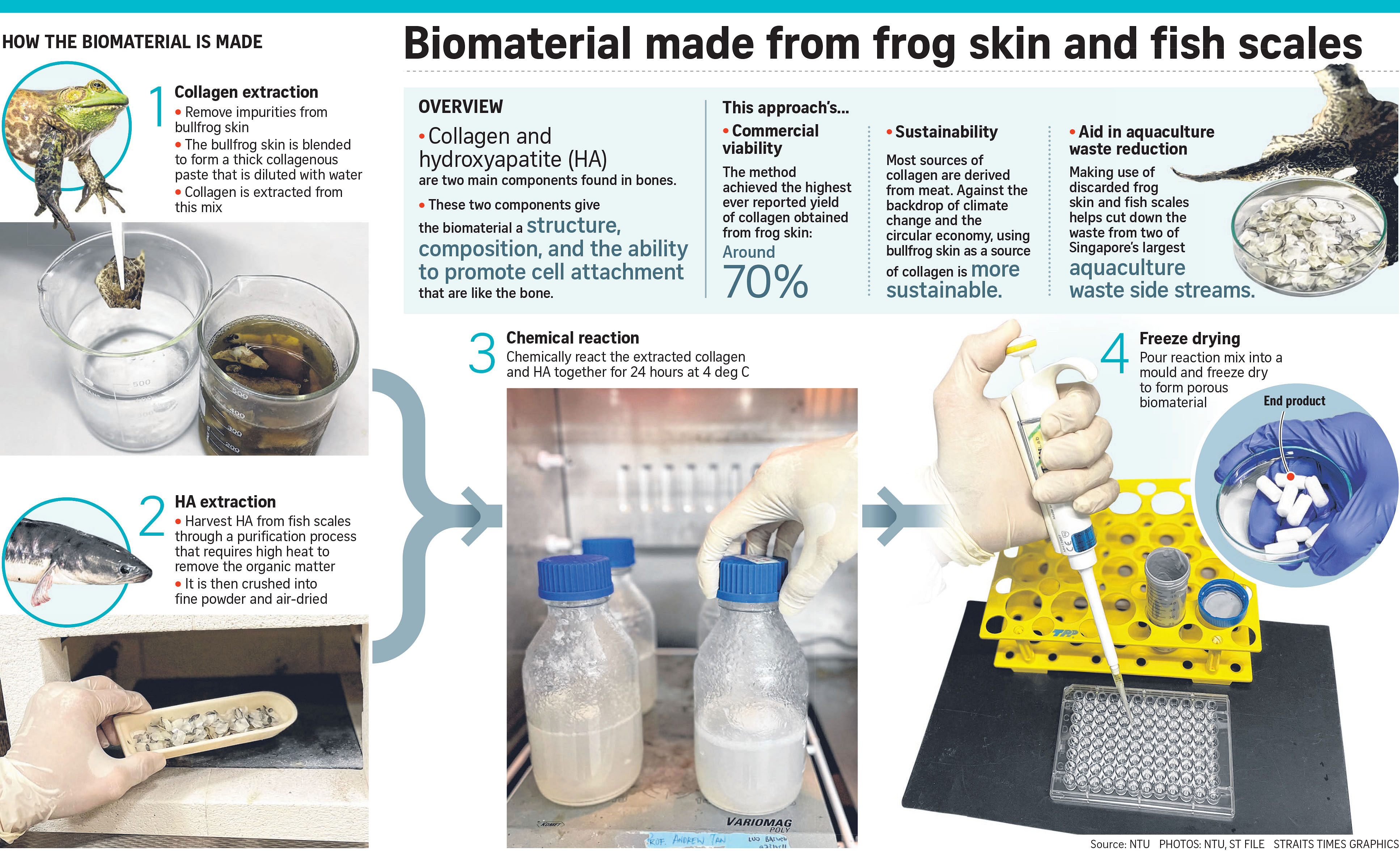Bone repair often requires additional surgery to extract a patient's own tissue, but scientists at the Nanyang Technological University (NTU) have developed a biomaterial that could help make it a cheaper and less painful process.
And they are making the material from frog skin and fish scales, which are usually discarded by farms.
The biomaterial has a wide range of potential biomedical applications, said Assistant Professor Dalton Tay of the NTU School of Materials Science and Engineering as well as the School of Biological Sciences, who led the multi-disciplinary study.
The porous biomaterial acts as a scaffold for bone-forming cells to adhere to and multiply, leading to the formation of new bone.
It could be used to help with the regeneration of bone tissue lost to disease or injury, such as jaw defects from trauma or cancer surgery.
It could also assist bone growth around surgical implants, such as dental implants.
Clinical Associate Professor Goh Bee Tin, director of research at the National Dental Centre Singapore, who was not involved in the study, said: "We see many potential dental applications ranging from the regeneration of gum tissue in periodontal disease, to bone for placement of dental implants, to jawbone following tumour surgery."
The research team believes the biomaterial is a promising alternative to the current practice of using a patient's own tissue.
At the same time, the production of the biomaterial helps to reduce aquaculture waste, as it is synthesised from discarded frog skin and fish scales.
Ms Chelsea Wan, director of Jurong Frog Farm, said that the integration of multiple sources of seafood waste into a single product is an important example of sustainable innovation for the aquaculture industry.
"In Singapore, the combined annual consumption of frog flesh and fish is estimated to be around 100 million kg, making bullfrog skin and fish scales two of Singapore's largest aquaculture waste side streams," she added.
Professor Matthew Hu Xiao, co-author of the study and director of the Environmental Chemistry and Materials Centre at the Nanyang Environment and Water Research Institute (Newri), said that aquaculture waste can also be converted into green chemicals and materials to help reduce environmental contamination.
To make the biomaterial, the scientists extracted collagen from bullfrog skin and a compound from the fish scales, which are major components found in bones. They give the biomaterial a structure, composition and ability to promote cell attachment that are like bone. The components also make the biomaterial tough.
The biomaterial is synthesised by adding the fish scale compound in powder form to the collagen, and the mixture is then cast into a mould to produce a 3D porous scaffold.
The entire process takes less than two weeks, but the research team believes it can be shortened and scaled up.
The research is being carried out by NTU's School of Materials Science and Engineering as well as School of Biological Sciences, Newri and the Energy Research Institute.
The team has filed patents for the biomaterial's wound healing and bone tissue engineering applications.
The scientists are now evaluating the long-term safety and efficacy of the biomaterial as dental products under a grant from the China-Singapore International Joint Research Institute, with the aim of commercialising it.
Speaking to reporters at a briefing yesterday, Prof Tay said that the team is moving to test the biomaterial on animal models in the next phase of the project and that it would take at least five years before it can be applied to clinical settings.

